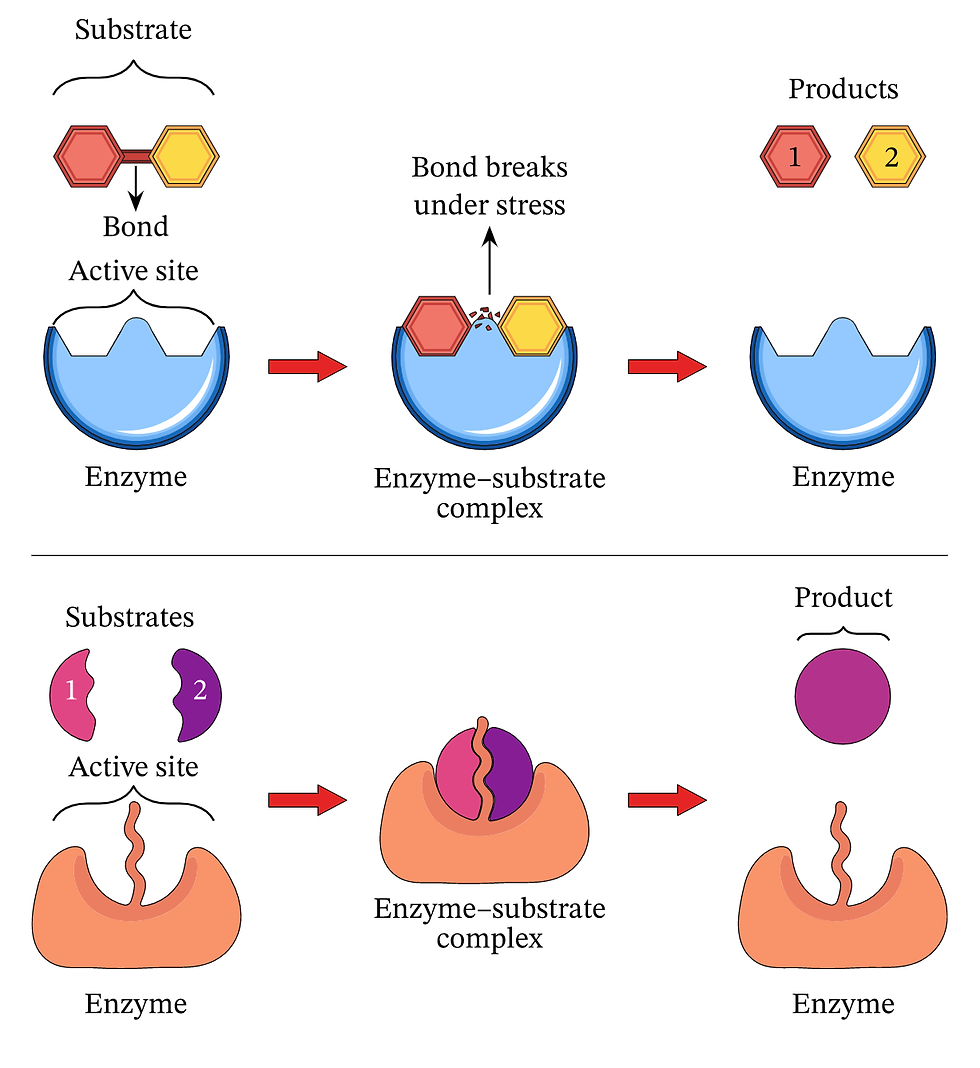What is an Enzyme
- hasinakoda
- Jul 23, 2022
- 3 min read
Updated: Sep 4, 2022

In my first post where I discussed the causes of Alopecia, you probably noticed that I italicized and underlined the suffix -ase several times throughout the article. Which can be found here
I did that for a reason. The purpose and aim here is to strategically drop bits of information in a digestible format so that you will gradually understand health, science, and thus your body, making this health thing so much easier for everyone. #classisinsession So, the next time one of those doctors with the white coat, and a degree, start using all those big words to talk above your understanding, you can use your own judgement and knowledge to know if you need to get up and allow your feet to carry you as far away from that person as possible. #iunderstandwhatyousaid
So what is an enzyme bruh?!
Enzymes are basically energy circulators. They break things down build things up and speed up chemical reactions. This is important because the blood moves through the body at the speed of light. Wow...that's crazy... Now, if we compare that to the speed of the rest of the body, it's slower than snail speed. So, in order for your body to keep up you have enzymes. This conserves the body's energy and allows it to be used in other areas as well.


For instance. When you place food in your mouth and you start chewing, your salivary glands start to produce an enzyme called 'Amylase" . Notice the suffix -ase again. some of the biggest clues to deciphering scientific jargon are suffixes (and prefixes), as they tell us what is being communicated. Below I will give several examples of what I mean by this. And as you build your vocabulary, this will become much easier for you to understand. #healthsimplified
Amylase (Amylo/Amylon= Starch) = Enzyme that breaks down starches
Protease (Prote= Protein) = Enzyme that breaks down proteins
Lactase (Lactose = a type of sugar found in milk) = Enzyme that breaks down Lactose
Lipase (Lipid/Lipo = a Fat, these include oils, triglycerides, and Cholesterols) = Enzyme that breaks down fats
Maltase (Malt/Maltose = A sugar that comes from Barley) = Enzyme that breaks down Maltose
Sucrase (Sucrose = A sugar that comes from Sugar Cane) = Enzyme that breaks down sucrose
Though the prefix and suffix rule does not apply to everything, it is definitely a good starting point to understand the nomenclature (profession specific vocabulary) of health science.
Substrates:

A substrate is simply the thing being acted upon by the enzyme. All of the things listed just above the picture are considered substrates and have their respective enzymes that metabolize/break them down. This is called a catabolic (break down) enzyme reaction.
As seen Above, enzymes also do the reverse, anabolic (build up) enzymatic reactions, where it takes smaller substrates and bind them together and build bigger structures. An example of this is RNA Polymerase. I know....don't panic. We will definitely go over this soon.
Notice how the active site (where enzymes and substrates fit like a puzzle) has a specific shape that matches the shape of the enzyme? This shape can become disfigured from being 'denatured' this usually happens when the PH of your body is too alkaline or too acidic. This is why the alkaline diet in itself is dangerous. There must be balance.

If you enjoyed this article or need more clarity on the subject, leave a comment down below. Also, if subscribe and become a member so you are notified when there are any new updates, posts, or sales. As a member you also will earn points for every dollar spent that can be used towards: discounts on products and consults, free shipping, and much more. Join Here it's completely free! Also, if you are in need of any assistance with your health, fill out an Intake Form so we can better understand your situation and Schedule a Consult. We even have free 15 minute options. Peace and love!
Did you find this Article Helpful?
0%Heck yeah!
0%Nah...












Comments